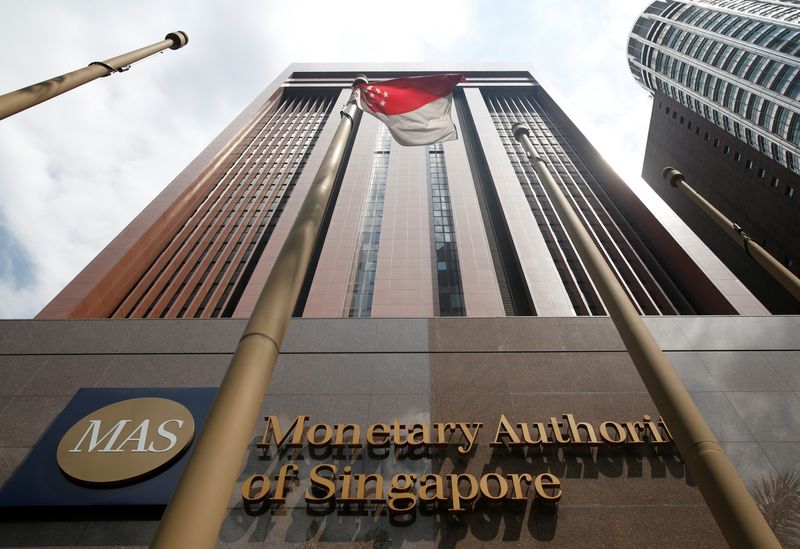
© Reuters. FILE PHOTO: A view of the Monetary Authority of Singapore’s headquarters in Singapore June 28, 2017. Picture taken June 28, 2017. REUTERS/Darren Whiteside
By Chen Lin
SINGAPORE (Reuters) – Singapore is likely to tighten monetary policy this month, for the sixth time in a row, amid persistent price pressures in the Asian financial hub due to global supply chain disruptions.
Eleven out of the 17 analysts polled by Reuters expect the Monetary Authority of Singapore (MAS) would tighten its policy, perhaps for the last time in the current cycle in April, citing the need to tame the persistent elevated inflation.
Among the 11 analysts who see tightening, five think the MAS would steepen the slope only while six think that it would only upwardly re-centre the mid-point of the band.
Adjusting the mid-point is typically seen as a more “aggressive” tool than adjusting the slope.
Instead of interest rates, the MAS manages policy by letting the local dollar rise or fall against the currencies of its main trading partners within an undisclosed band, known as the Singapore dollar Nominal Effective Exchange Rate, or S$NEER.
It adjusts its policy via three levers: the slope, mid-point and width of the policy band.
“We firmly believe that policymakers were much more concerned about near-term price pressures last year. We see concerns shifting to the medium-term, hence the return to slope steepening,” said analysts at the Bank of America (NYSE:).
Six analysts expect no change to monetary policy at all, citing the weak economic outlook.
“Although inflation stayed above the official forecasts, domestic supply prices have slowed amidst falling import prices. Business expectations, the composite leading index and non-oil domestic exports have all turned negative,” said analysts at DBS.
“Given that Singapore is a price taker in the global economy, keeping the status quo on the SGD NEER policy is consistent with the trend of major central banks moving from dovish hikes towards hawkish pauses,” they added.
Singapore’s non-oil exports have contracted for five straight months.
The central bank is expected to release its next semi-annual monetary policy statement no later than April. 14.
The MAS has tightened monetary policy five times in a row, with the latest in October in a scheduled review. It typically holds two policy meetings each year though conducted it two additional out-of-cycle decisions last year as consumer prices surged.
Singapore’s core inflation has remained at around a 14-year high in recent months at 5.5%.
MAS has said core inflation was likely to stay at about 5% for the early part of 2023.
It has also projected a core inflation rate of between 3.5% to 4.5% in 2023, with headline inflation coming in at between 5.5% and 6.5%.
The government had projected gross domestic product growth to ease to 0.5% to 2.5% this year, from 3.6% in 2022.
Singapore removed all of its COVID-19 curbs in February this year and expects the tourism sector to recover to pre-pandemic levels by 2024.





